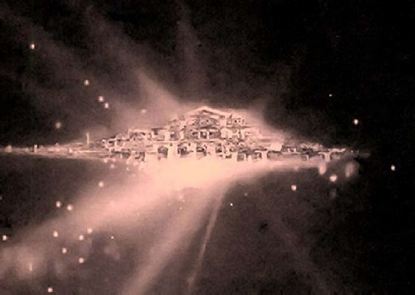По всем вопросам обращайтесь на: info@litportal.ru
(©) 2003-2025.
✖
SCIENCE AND TECHNOLOGY XXI: New Physica, Physics X.0 & Technology X.0
Настройки чтения
Размер шрифта
Высота строк
Поля
RRRC
…being a complete enclosure of a finite class of change sets is represented by a full graph where all the nodes symmetrically linked up with each other by directed arrows. That suggests that the bondage or linkage of things can be firstly measured as the set of all possible efficient links (ties, bonds, and connections) among them, plus spatial and temporal relations. Also it suggests that there is no such a strictly fixed priority of input causes before output effects like as given by asymmetrical expression C
x C
, where the order of their being is assumed not to be reversed.
In fact, physical entities interact, being in reciprocal actions and mutual influences, every entity can change (act on) other entities or be changed (is acted upon by) by other entities. Such a universal regularity in the relationships of changes and order of phenomena in the world is described by the Process Reversibility Principle formulized as the equation:
< C
, C
> =# < C
, C
>
(3)
Where the function # R
is reversal operator #: R
R
which describes the operation of reversing the order of two disjoint changes or actions or force-causes. The reversion rule can be formulated like as C
is a necessary and sufficient for C
, meaning
Achange of type C
would bring about a change of type C
if, and only if, C
were to produce C
.
This fundamental principle of change confirms that any fundamental process of the universe stands in a relation of convertibility (reversibility), reciprocity and mutuality, thus accounting for inverted, reversed, reciprocal and interactive phenomena in nature. Alternatively, the principle of inverse force-relations may be read as:
Whatever comes into being as a process just as well will come as the inverse process.
Thus, the real interrelationships of forces, power and energy are transitive, symmetric, and reflexive; for, additionally to the property of transitivity of changes (or actions) when cause of cause is cause of effect, there is also other essential characteristic of process reversibility: the inherent quality of all real processes to be reverted, retroacted or retrogressed in opposite order.
In the natural world, due to the universal phenomenaofconvertibility and reversibility, processes are arranged in a circle of changes, actions or events; thus making up the mutual, reciprocal natural relationships, as in: R
R
C
C
C
, where the symbol R
stands for a forward process and R
for the backwards process. As a result, we obtain a full interrelationship or a circular process made up of distinct changes, C
and C
; of any kind, substantial, quantitative, qualitative, variable, or relational:
(C
C
)?(C
C
)=C
C
(4)
The formula indicates that when the forward process has come-to-be, the backwards process must always come-to-be too. In other words, real processes are nothing but mutual relationships of cause-changes and effect-changes, that it is a reciprocal process between two or more kinds of changes.
For such a tendency is retained for more complex cases of ternary, quadruple, quintuple, or n-tuple circles of changes, actions, or causes. So, for the recurring series of actions of the length 3, which is a case of ternary relations (C
C
C
) (C
C
C
), we obtain a circular chain of three changes C







